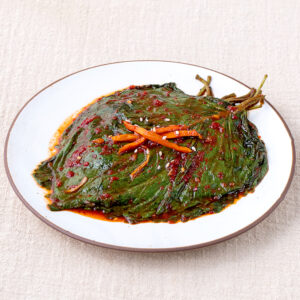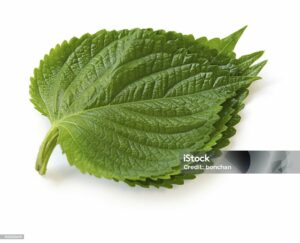Making Korean Perilla Leaf Kimchi: Be sure to add ‘this’!
Welcome to our culinary blog! Today, we’re excited to bring you a special feature on Perilla Leaf Kimchi, a quintessential Korean side dish perfect for summer.
This blog post will guide you through each step of preparing this delicious kimchi, highlighting the addition of ginger—a key ingredient that not only enhances the flavor but also brings significant health benefits.
Ideal for both kimchi aficionados and newcomers alike, this recipe promises to elevate your dining experience with its rich flavors and simple, nutritious approach. Join us as we explore how this classic dish can become an indispensable part of your summer meals.
Making Korean Perilla Leaf Kimchi: Be sure to add ‘this’!

Introduction
Welcome to our culinary journey where we delve into the delightful world of Perilla Leaf Kimchi, a staple during the warm summer months.
This blog post will guide you through the process of making this uniquely Korean dish, emphasizing the addition of a special ingredient that significantly enhances its flavor, making it richer and more sophisticated.

The Importance of Perilla Leaf Kimchi
Perilla Leaf Kimchi stands out as an easy-to-enjoy side dish that’s particularly suitable for the summertime. Amidst escalating food costs, it remains a budget-friendly and healthful option.
Perilla leaves, known for their aromatic and flavorful characteristics, reach their peak during this season. This allows for the creation of an extraordinarily tasty dish with surprisingly simple preparation steps.

Cleaning Methods
The proper cleaning of perilla leaves is essential to the success of making kimchi. Each leaf needs to be meticulously washed and dried to ensure that all the natural flavors and aromas are preserved and can effectively meld with the kimchi seasoning.
This thorough cleaning helps in removing any grit and ensures the leaves are perfectly prepped for seasoning.
Main Ingredients and Seasoning
To craft this traditional kimchi, several key ingredients are required: soy sauce, fish sauce derived from anchovies, plum extract, sugar, minced garlic, chili powder, onions, green onions, and toasted sesame seeds.
These components are blended to create a rich and flavorful seasoning paste. Integrating ginger extract or additional plum extract not only enriches the flavor profile but also bolsters digestive health and provides protection against foodborne illnesses.
Special Ingredient: Ginger
Ginger plays a pivotal role in enhancing this kimchi recipe. Particularly beneficial in the summer, ginger addresses common digestive issues and frequent stomach upsets prevalent during the hotter months.
Its warming properties aid in digestion and provide a soothing effect on the abdomen. As a result, ginger not only boosts the dish’s flavor but also allows its taste to mature and deepen over time, adding complexity and depth.
Preparation and Application of Seasoning
After preparing the seasoning mix, it’s crucial to apply it evenly across each perilla leaf. Starting from the bottom and moving upwards, it’s advisable to layer a slightly more generous amount of seasoning as you progress.
This technique ensures that the seasoning permeates every layer of the leaves, allowing for a uniform distribution of flavors that enhances the overall taste of the kimchi.
Tasting and Health Benefits
One of the great advantages of this perilla leaf kimchi is that it can be consumed immediately after preparation, eliminating the need for a lengthy fermentation process.
It’s particularly beneficial for those suffering from atopic dermatitis, rhinitis, or allergies. The flavor profile of the kimchi deepens over time, becoming more rich and enticing with each bite.
Taste tests reveal that its robust flavor wonderfully complements rice, making it an excellent addition to any meal.
Conclusion
This exploration into the art of making Perilla Leaf Kimchi has revealed a straightforward yet highly nutritious and palatable recipe.
The inclusion of ginger not only elevates the flavor but also imparts significant health benefits, establishing this kimchi as an essential side dish for any summer dining experience.
Whether you’re a seasoned kimchi aficionado or a curious newcomer to Korean cuisine, this recipe is sure to impress with its depth of flavor and health-promoting properties.



